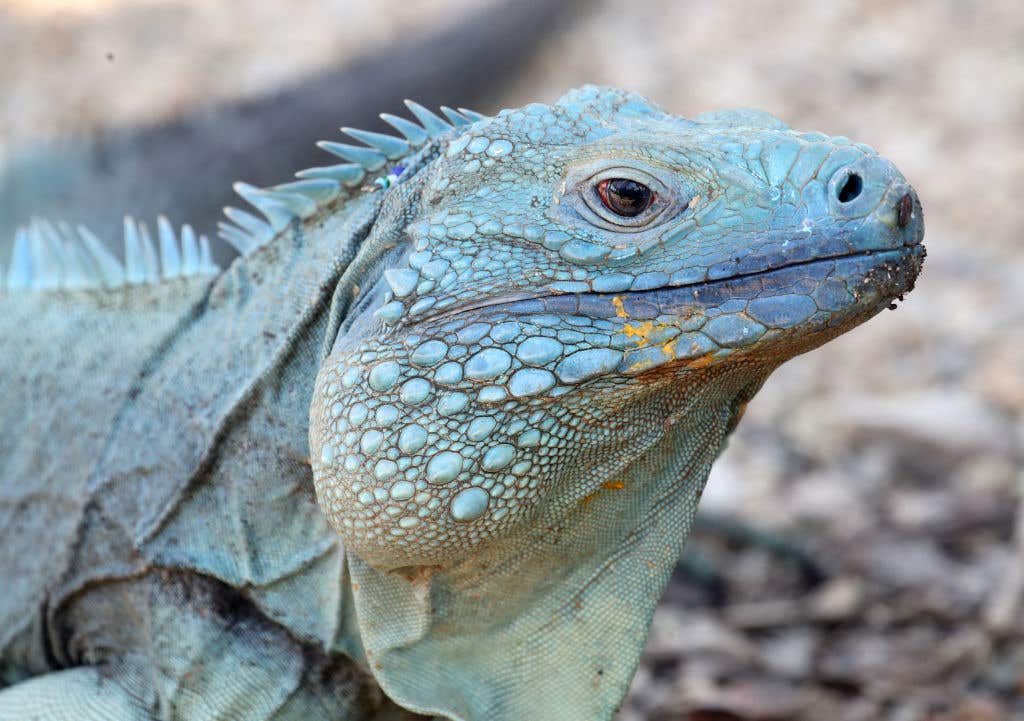
Iguanas are Adapting: Good News for Them, Bad News for Florida.
Cold-stunned iguanas falling from trees in Florida may become a rarer sight in the future, according to ongoing research. This is due to both rising global temperatures caused by climate change and a shift in the lizards' ability to withstand cold temperatures. While this may be a disappointment to those hoping that the recent drop in temperatures would help reduce the population of these invasive and damaging reptiles, it's good news for the iguanas themselves. They won't have to worry about turning into iguana popsicles anymore!
These guys can cause numerous problems in Florida, including Salmonella, devouring endangered plants and animals, and undermining seawalls. In fact, on at least one occasion, an iguana caused a power outage in an entire city by gnawing on electrical wires. Talk about having a taste for electricity!
When temperatures drop, cold-blooded reptiles like iguanas lose control of their muscles, causing them to fall out of trees! While they usually recover once they warm up, prolonged exposure to cold temperatures can be fatal. Therefore, biologists have considered frigid weather as the best way to curb the population boom of these lizards. However, according to recent research, it may now take much colder temperatures to achieve this.
Iguanas are Adapting:
According to WUSF, a study at Washington University in St. Louis, found that most of South Florida's most common lizard species can withstand slightly lower temperatures than they could just four years ago, a drop of about 2 degrees Fahrenheit. This means that the magic number at which most Florida lizards freeze up is now around 44 degrees Fahrenheit. Researchers figured this out by packing lizards into an ice-filled cooler and monitoring their body temperature as they cooled down. Can you imagine being a lizard in one of those coolers? Brrr!
Iguana Hunters:
Professional iguana hunter Steve Kavashansky, who runs the company Iguana Busters, has noticed a decrease in the number of calls he receives about stunned or dead iguanas after cold snaps. This supports the theory that iguana populations may be moving north as they become accustomed to slightly colder temperatures. In fact, there have been reports of iguanas as far north as Orlando.
While iguanas may be becoming more cold-hardy, they are still at risk. Additionally, the long-term effects of climate change on these reptiles, as well as other species, are still unknown. However, the fact that iguanas are showing some degree of adaptability to changing conditions is a reminder that all living things have the potential to evolve in response to their environment. Who knows, maybe one day these lizards will be able to survive a full-on polar vortex!
Watch Out For Falling Iguanas This Weekend In SWFL
Watch out for falling iguanas this weekend in SWFL!
With low's in the high 30's, this Christmas will be the coldest in SWFL since the mid 90's. While we won't see falling snow, we could see falling iguanas!
It's always funny when talking to friends in cold weather states about falling iguanas. I told my friend Brittany, who lives in Wisconsin, that we'll see falling iguanas this weekend, and I don't think she took me too seriously. But it's actually a very common sight at this time of year. That’s right, when temperatures dip below 40 degrees, these reptiles literally fall out of their treetop homes. But why is this happening? Let’s explore the fascinating reality of iguanas and cold weather.
What Causes Iguana Hypothermia?
When temperatures drop below 40 degrees, iguanas experience what is known as “cold-stunned hypothermia.” This occurs when an animal can no longer regulate its own body temperature and becomes lethargic—in extreme cases, comatose. To combat the cold, iguanas slow down their heart rate and metabolism. This helps them conserve energy which allows them to survive freezing temperatures for extended periods of time without food or water. However, if the temperature falls too low or stays too low for too long, then they become unable to keep warm on their own and can become so lethargic that they literally drop out of trees and appear dead.
The natural instinct for most people is to take such a seemingly lifeless creature indoors and warm it up with a heating pad or blankets. But this isn't necessarily the best option—in fact, it could be deadly! When these creatures are taken indoors, chances are they won't survive due to shock or organ failure caused by rapid warming.
So what should you do if you encounter one? If possible, move them into the sun until temperatures rise above 50 degrees; if not possible, cover lightly with newspaper or cloth.





